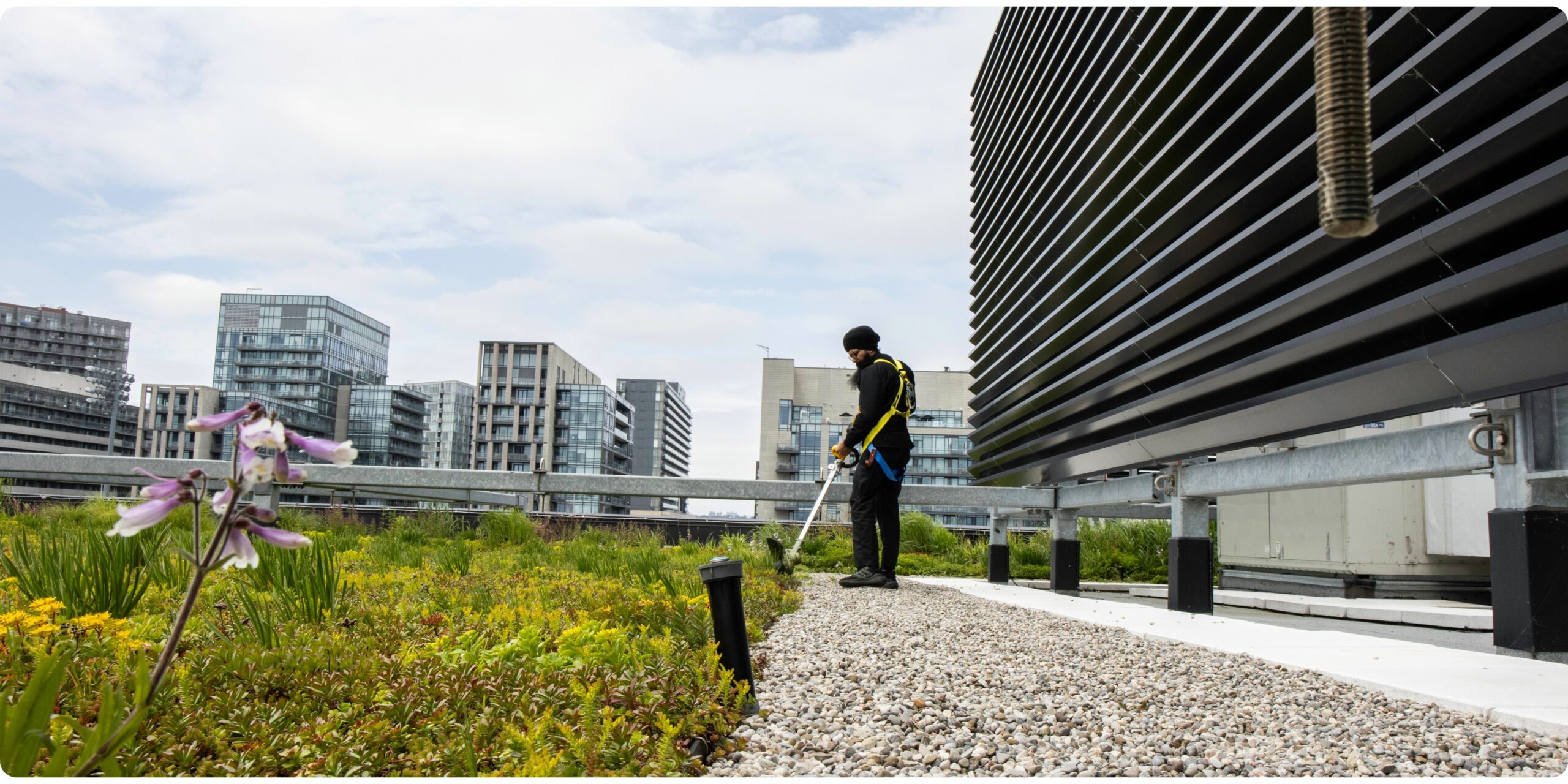Green roofs offer numerous benefits, including enhanced insulation, stormwater management, and urban biodiversity. However, to maintain their effectiveness and longevity, regular maintenance is essential, especially in regions experiencing all four seasons. Spring, in particular, is a critical period for green roof care, addressing winter-induced damage and preparing the system for the growing season ahead.
Why Spring Maintenance Matters
1. Addressing Damage from Snow and Ice
Winter conditions can be harsh on green roofs. The accumulation of snow and ice may lead to physical damage, such as membrane punctures or stress on structural components. As temperatures rise, the freeze-thaw cycle can exacerbate these issues, potentially compromising the roof’s integrity. Conducting a thorough inspection in spring allows for the identification and repair of any damage sustained during winter, ensuring the roof remains watertight and structurally sound.
2. Preparing for Spring Rains
Spring often brings increased rainfall, making efficient drainage crucial. Debris accumulation over winter can obstruct drainage systems, leading to water pooling and potential leaks. Clearing these blockages ensures that rainwater is effectively channeled away, preventing water-related damage and maintaining the roof’s stormwater management capabilities.
3. Preventing Pest and Weed Growth
As temperatures rise, dormant pests and weed seeds can become active, posing a threat to the health of the green roof ecosystem. Early spring maintenance, including the removal of unwanted vegetation and monitoring for pest activity, helps in maintaining a balanced and thriving plant community.
Ideal Yearly Maintenance Schedule for Four-Season Climates
Establishing a structured maintenance schedule ensures the green roof remains functional and vibrant throughout the year.
Spring (March-May):
Debris Removal and Damage Inspection: Clear the roof of leaves, branches, and other debris. Inspect for signs of damage, such as membrane tears or erosion, particularly focusing on areas susceptible to snow and ice accumulation.
Drainage System Check: Ensure that gutters, downspouts, and drains are free from obstructions to handle spring rains effectively.
Soil and Vegetation Assessment: Evaluate soil conditions and plant health. Replenish soil where necessary and replace or reseed any damaged or dead plants to promote robust growth.
Summer (June-August):
Irrigation Monitoring: Regularly check irrigation systems to prevent drought stress, adjusting watering schedules based on weather conditions.
Weed and Pest Control: Remove invasive species and monitor for pests, employing eco-friendly control methods to protect the plant community.
Mid-Season Inspection: Assess the structural integrity of the roof and the health of the vegetation, addressing any issues promptly to prevent escalation.
Fall (September-November):
Preparation for Winter: Trim overgrown plants and remove any dead foliage to reduce the risk of disease and prepare the roof for winter conditions.
Drainage Maintenance: Clean and inspect drainage systems to ensure they can handle increased precipitation, preventing water accumulation and potential damage.
Soil Enrichment: Apply fertilizers or soil amendments as needed to replenish nutrients, supporting plant health through the dormant season.
Winter (December-February):
Minimal Intervention: Limit maintenance activities to prevent damage to frozen plants and soil.
Snow Management: Monitor snow accumulation, ensuring that it does not obstruct drains or exceed the roof’s load-bearing capacity.
Professional Maintenance Recommendations
Engaging professionals with expertise in green roof systems can enhance maintenance effectiveness. The City of Toronto’s Green Roof Construction Standard suggests that a maintenance program should include the annual removal of dead vegetation that does not promptly decompose and may present a fire risk. Additionally, installing a permanent irrigation system and ensuring safe access for maintenance are recommended best practices.
Regular maintenance is vital to maximizing the benefits and lifespan of green roofs. Spring serves as a pivotal time to address winter-related damage, prepare for the growing season, and implement measures that prevent potential issues. By adhering to a comprehensive, seasonally adjusted maintenance schedule, property owners can ensure their green roofs remain healthy, functional, and aesthetically pleasing year-round.


